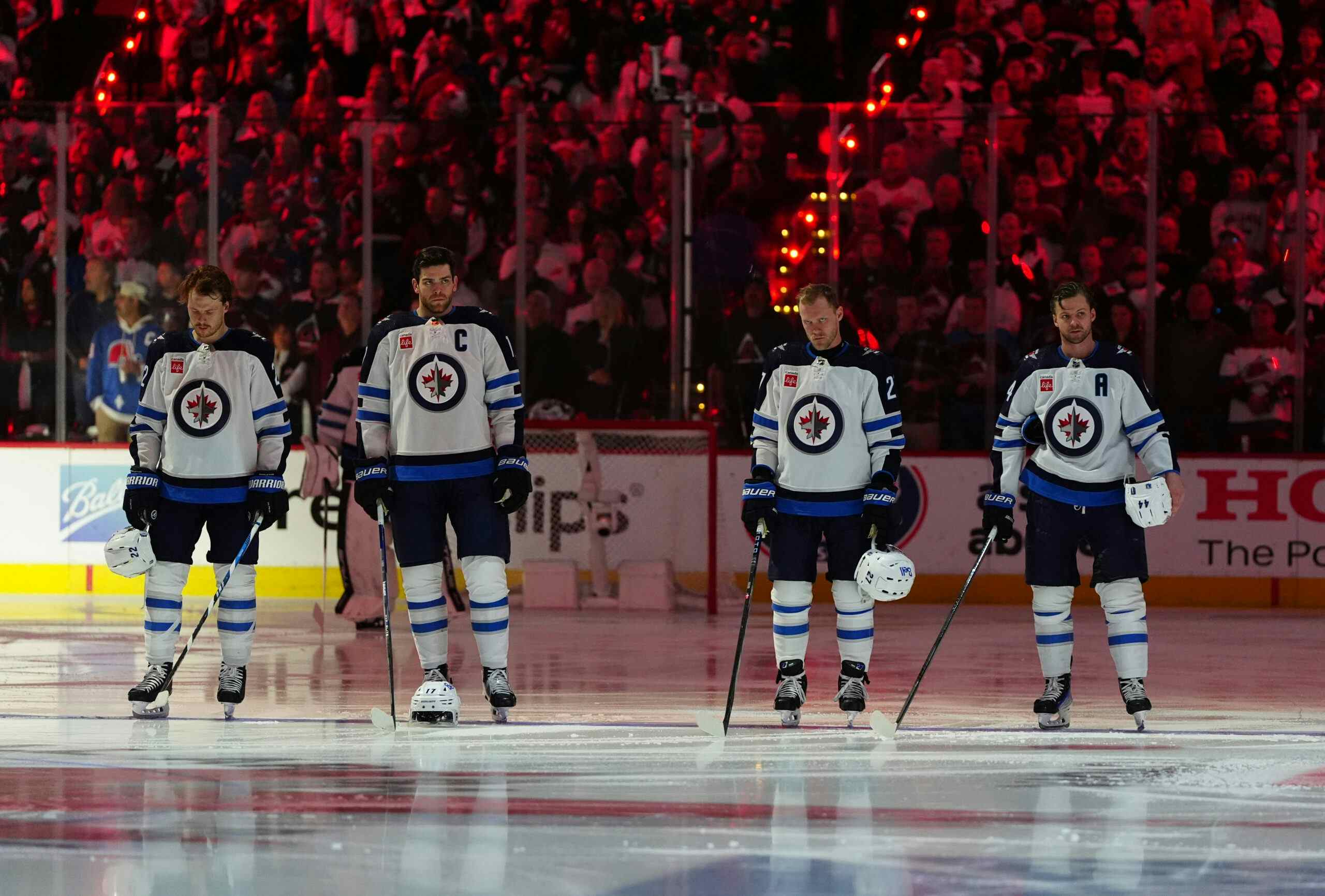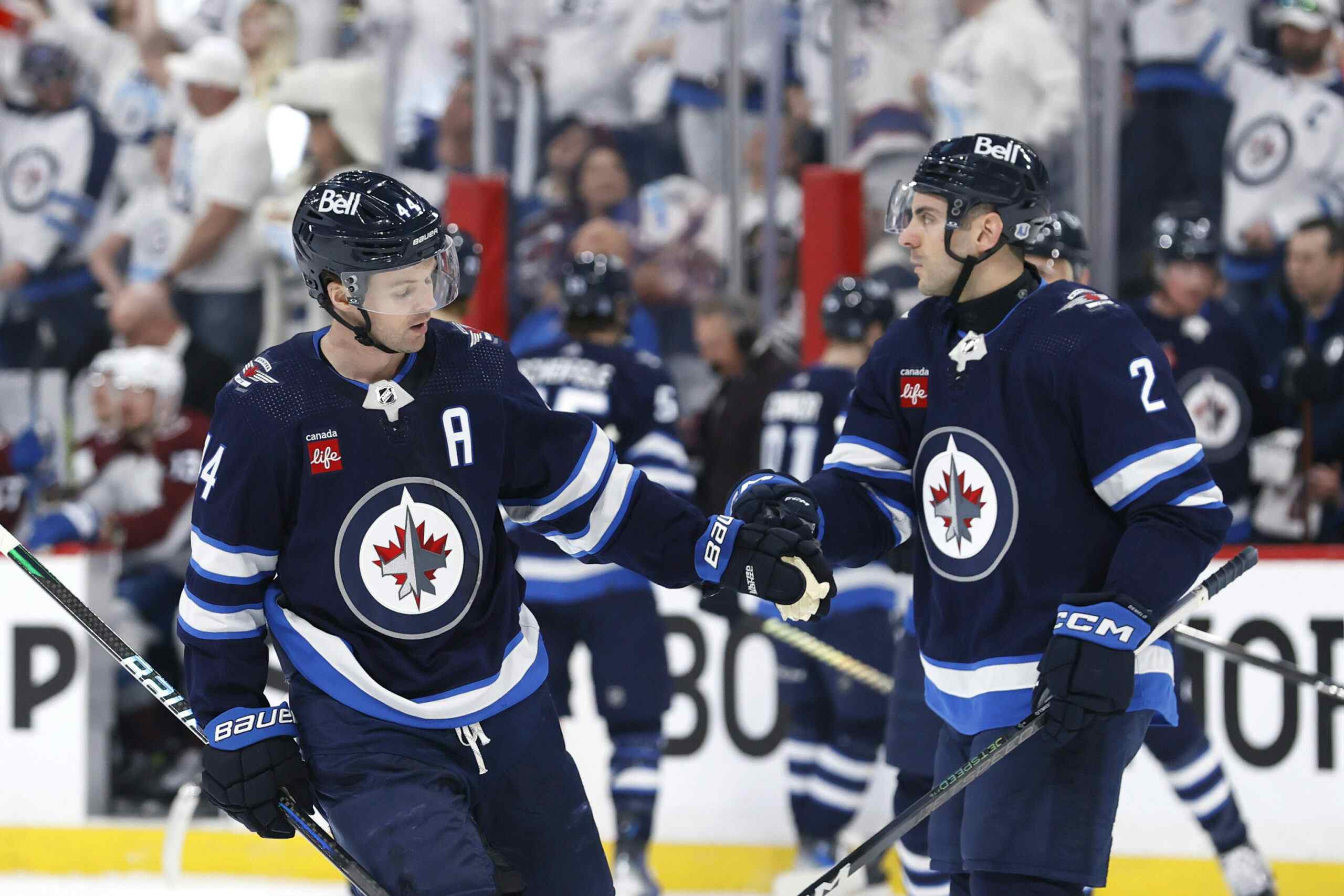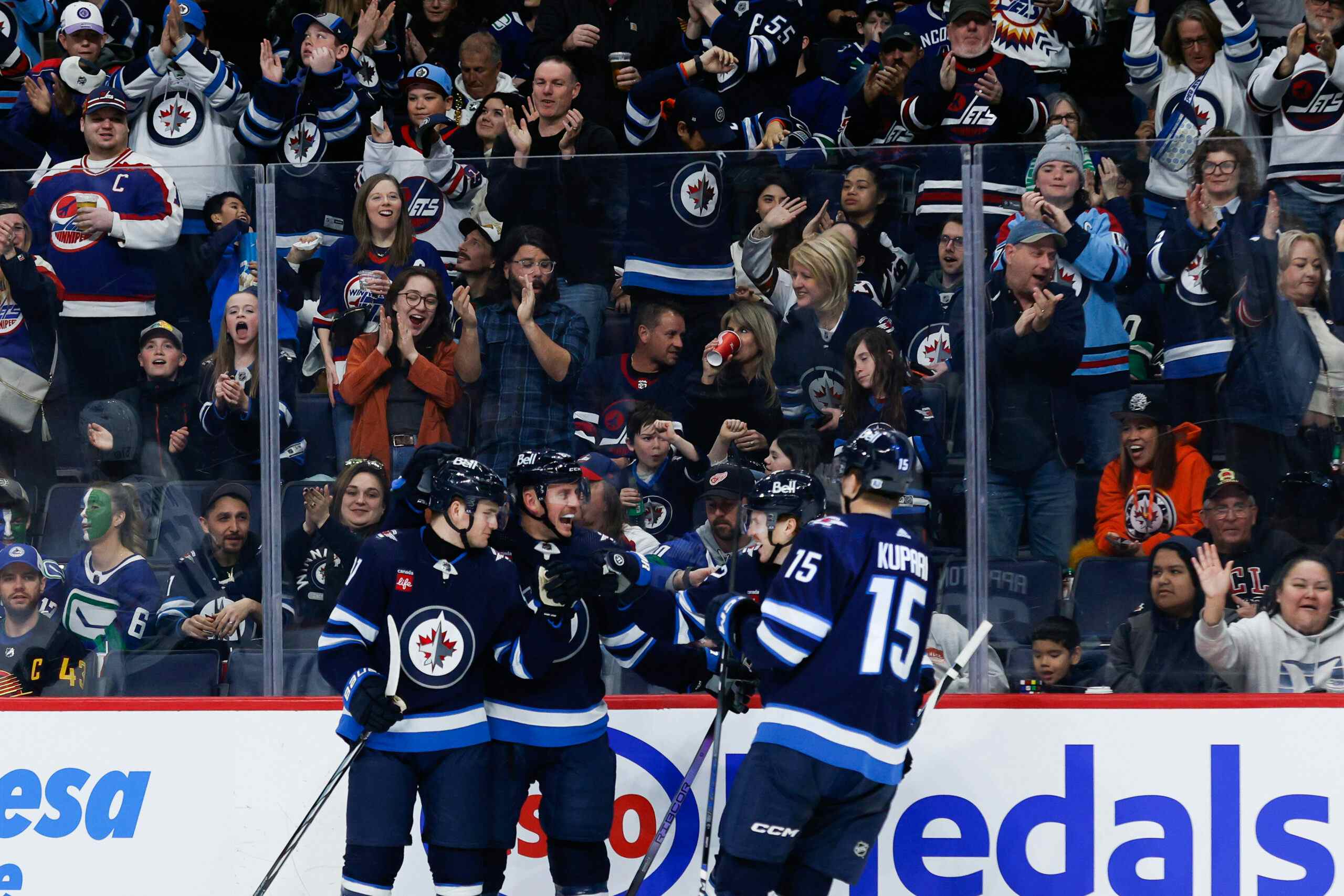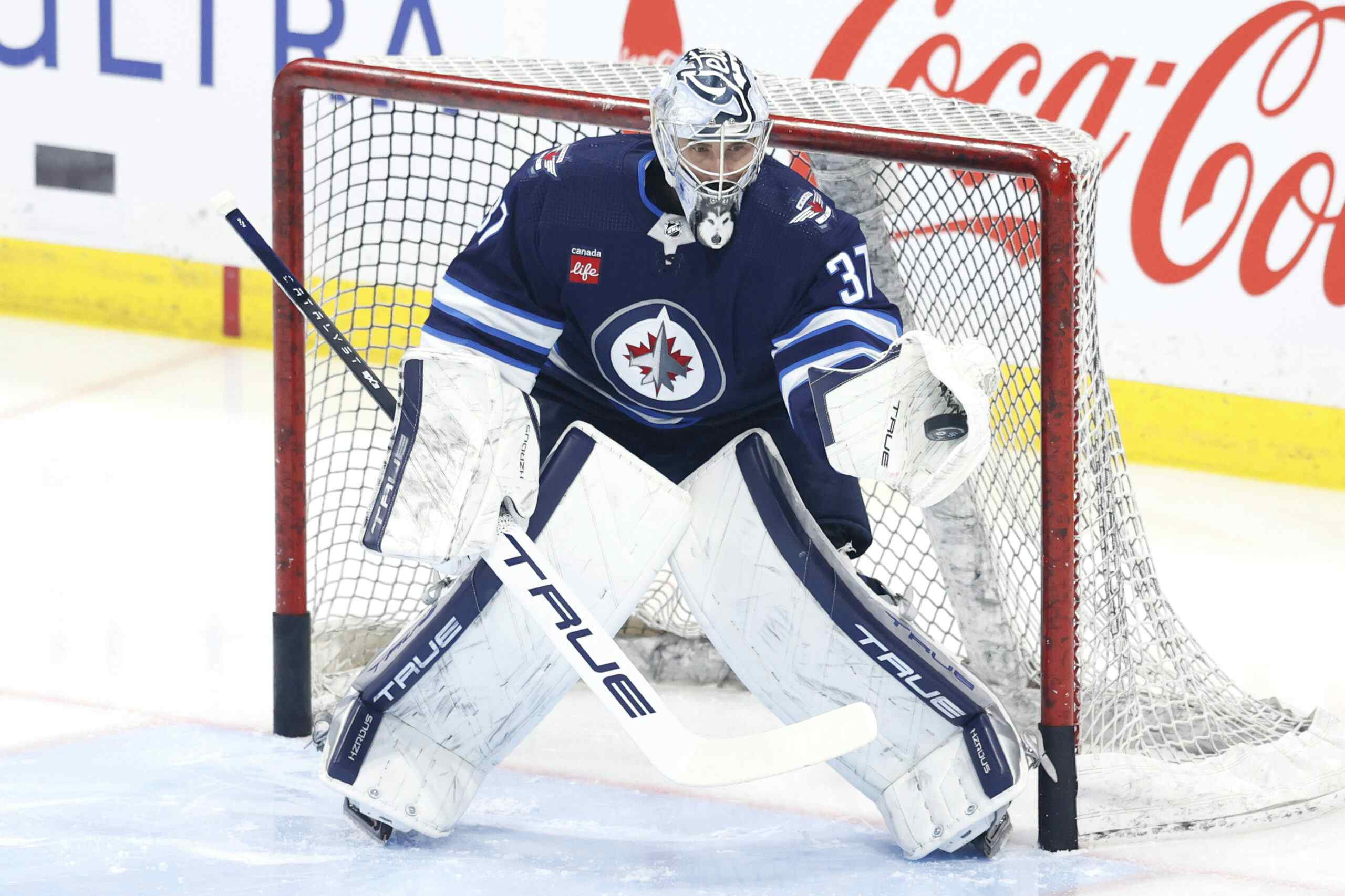Eclectic Eighteen: Top Younger UFA Defensemen Desirable for the Jets
By MC Hockey
11 years ago
Using a combination of useful websites including specific tools from www.capgeek.com and mainly www.behindthenet.ca I was able to rank unrestricted free agent defenseman on the right side of 30 years old (with some exceptions) to help determine which players that the Winnipeg Jets or other teams should consider signing come the July 1, 2012 free agency date.
That is assuming the teams want them and the players make it that far….noting stellar stay-at-home defender Barret Jackman recently came off the market. Also, while the Restricted Free Agent Qualifying Offers came out on June 25, the unqualified talent is marginal at best and thus is ignored here.
As always, pardon the television and radio program and commercial references sprinkled throughout my commentary, and if you like, count them and give me your best guess, perhaps we can award a prize (perhaps not)!
Utilizing the UFA Finder on Capgeek to sort out who the key UFAs were across the league, I gathered them together and was able to go to BehindtheNet (BTN) to see which defenseman currently under 30 had played at least 40 games in the 2011-12 regular season and are worth a hard look by GMs and scouting staff of needy Canadian franchises like the Winnipeg Jets.
Also, for comparison purposes to see how they rank versus these young studs who play more games, I also added into the equation a few notable defenseman, including Winnipeg Jets players Mark Flood (a 27-year old UFA who played 33 games) and Randy Jones (30 years of age, 39 games in 2011-12), plus the surprisingly-ranked Cory Sarich (33 years old, 62 games last year) from the Mighty (Something) Flames of Calgary.
Below I will present my tables with the rankings of who is “most desirable” without taking salary factors into account, but first I should explain upon which features the rankings are based so you know why a Carlo Colaiacovo rates ahead of a Ryan Suter for example:
I have a notion that that NHL teams would do something similar to this ranking system, but at a much more sophisticated level, with somewhat less quantifiable factors like “hockey sense” and “big game performance” factored into their rankings, plus more video evidence to back them up. In fact, in viewing an interview of Chris Snow from the Calgary Flames (who heads up their video and analysis) he talks about how examples of hockey sense can be shown in video and presumably help you to rank a player’s value based upon seeing it. While the video (on the Flames website) was talking about ranking players for the NHL Draft, it moves on to current NHL player analysis.
The Process
In my analysis, the rankings are based on five statistical factors:
1. Corsi-On/60: Most heavily weighted at 45% of my final score is the Corsi-On (or Corsi-On/60 – see definition below), a measures of which defenders were able to help drive the play to the other team’s end and therefore minimize scoring chances at their own end. Per BTN, Corsi On refers to “On-Ice Shot Differential (goals + saves + missed shots + blocks). This is expressed as a rate stat per 60 minutes” so I feel, like many other in the “hockey advanced stats nation”, that this represents a good starting point for ranking overall quality of a player and thus it is very heavily weighted.
2. OZ Diff: Another BTN-drawn statistic that tells a somewhat similar story to Corsi is the Offensive Zone Finish Percent minus Offensive Zone Start. Hopefully this statistic (let’s call it OZD for offensive zone difference) tells us that player is also involved in actual scoring plays since naturally a shift ends when you score on the opponent. If OZD is a positive number, particularly over about 2.00, then that player can either be seen to push the puck ahead. So perhaps these players would also have a high ranking in the dubious but mainstream-media adored statistic Plus-Minus. However that is not the case with Top OZD players Aaron Rome (minus 4), Aaron Johnson (minus 12), and Chris Campoli (minus 3) showing perhaps these players are just risk-takers (Rome for high-flying Vancouver) or they play for poor defensive teams (Blue Jackets player Aaron Johnson). Since this statistic has similarities to Corsi-On, it is only given a 10% weighting on my final score.
3. Pen Diff: Another useful but less major statistic is if a player gets his team in trouble with penalties (that’s bad) or draws penalties (that’s good). By looking at Penalties Drawn less Penalties Taken (both on 60 minutes basis), we would expect most defensemen to be in the negatives, given blueliners tend to draw penalties as a result of their roles with holding, hooking, and interference being common.
Here we find players who would be considered “safe” in terms of not giving up many power plays, but also speaks to them perhaps not being the most physical defenseman. This statistic is flattened with anyone having a negative number just counted as zero, and the weighting of the statistic at 10% of my final score. Since the raw number before multiplying by 10 is usually a negative (d-men tend to be on the ice to take more penalties than drawing), only these 3 players had positive scores: Campoli, Johnson and Jones. Meanwhile Carle and Gilroy had very low negative raw numbers before scoring them with the “times 10” multiplier, followed by relatively good scores for Garrison, Gervais, Suter and Kuba.
4. Pts/60Min: Yes, the glamorous traditional counting statistics (goals + assists = points) obviously do hold some value in assessing players. Thus Suter and Wideman (both had 46 points in 2011-12 regular season adn Wideman was recently signed by Calgary) followed by Garrison (33) will up their value (like a Stampede garage door) on the UFA market considerably versus the others and should be considered for their offensive flair.
In simply counting goals plus assists, there is a big drop-off to Sheldon Souray (21 pts in 64GP), Matt Gilroy (20 in 67GP) as none of which had over 20 points, with Colaiacovo at 19 in just 64 games being the next closest. So this is an area where advanced statistics can help sort the wheat from the chaff, but if you want to really measure the value of a player in providing offense from the background, measure the Points per 60 minutes played to even out the “he plays more, that’s not fair” factor. By converting this measure, which does not adjust for power plays or shorthanded situations, we do see the rankings shift considerably, with the top guys in this statistic alone being (in order) the following: Johnson and Carle (tie), Gilroy, Gervais, and Bickel (yah, Bickel), then a closely-gathered bunch of Kuba, Garrison, Rome, and Wideman tied with Campoli rounding out the top 10. This statistic was weighted at 15% for defensemen.
5. TOI/60: Finally, my analysis gives a strong ranking to how much time a defenseman has played on the ice in 2011-12. Since you traditionally only have 3 sets of defensemen but 4 forward lines, one can easily conclude you need defense to play more minutes each game, and they do. Further, the more valuable and desirable defensemen would log more time than others by playing in more situations such as against the opposing teams top forwards, who also play more minutes than the average forward.
As such, TOI/60 should hold more value and so it carries a 20% value in my final score. This is where famous defensemen like Suter (TOI/50 score of 392.40) is way ahead of the next grouping of “known commodities” which are Wideman (361.0), Garrison (354.80), Carle (351.0), Kuba (348.80). From there, it drops off a lot to Colaiacovo at 317.60, Jurcina (314.8), and Souray (310.2), and finally at 304.60 with Gilroy. Nobody else scored over 300 in this particular metric.
| Name | Current Team | TOI/60 Score | Corsi-On Score | Pen Diff Score | OZDiff Score | Pts/60Min Score | FINAL SCORE | FINAL RANK |
|---|---|---|---|---|---|---|---|---|
| CARLOCOLAIACOVO | STL | 317.6 | 377.55 | 0 | 18 | 8.85 | 722 | 1 |
| MATTHEWCARLE | PHI | 351 | 211.95 | 0 | -16 | 16.2 | 563.15 | 2 |
| JASONGARRISON | FLA | 354.8 | 239.4 | 0 | -44 | 12.45 | 562.65 | 3 |
| FILIPKUBA | OTT | 348.8 | 233.1 | 0 | -90 | 12.75 | 504.65 | 4 |
| CORYSARICH | CGY | 294.4 | 88.65 | 0 | 8 | 6.9 | 397.95 | 5 |
| MATTGILROY | OTT | 304.6 | 0 | 0 | 10 | 15.9 | 330.5 | 6 |
| AARONROME | VAN | 272.2 | -4.5 | 0 | 39 | 12.3 | 319 | 7 |
| DENNISWIDEMAN | WSH | 361 | -49.05 | 0 | -11 | 12.15 | 313.1 | 8 |
| RYANSUTER | NSH | 392.4 | -134.1 | 0 | 13 | 11.1 | 282.4 | 9 |
| SHELDONSOURAY | DAL | 310.2 | -76.05 | 0 | 10 | 10.95 | 255.1 | 10 |
| BRUNOGERVAIS | T.B. | 251.2 | 17.1 | 0 | -75 | 15.75 | 209.05 | 11 |
| RANDYJONES | WPG | 261.2 | -106.2 | 1 | 2 | 3.6 | 161.6 | 12 |
| MILANJURCINA | NYI | 314.8 | -184.5 | 0 | -28 | 6.15 | 108.45 | 13 |
| AARONJOHNSON | CBJ | 279 | -248.85 | 3 | 34 | 16.2 | 83.35 | 14 |
| STUBICKEL | NYR | 201.8 | -230.85 | 0 | -37 | 13.95 | -52.1 | 15 |
| CHRISCAMPOLI | MTL | 277 | -408.15 | 5 | 43 | 12.15 | -71 | 16 |
| MARKFLOOD | WPG | 257.8 | -374.4 | 0 | 12 | 10.65 | -93.95 | 17 |
| STEVEEMINGER | NYR | 234.8 | -449.1 | 0 | -55 | 5.55 | -263.75 | 18 |
Discussion
So what does this all mean? Well, it means the best UFAs, if you believe in this analysis, in ranked order are: Carlo (eh, oh!) Colaiacovo, Matt (not the other guy Mathieu) Carle, Jason (every 2nd boy born in 1970s had this name) Garrison, Filip (Me Spellbad) Kuba, Cory (Hollywood burnout) Sarich, Matt (not this name again) Gilroy, and Aaron (two A’s for emphasis) Rome, and Dennis (a Menace) Wideman all rated ahead of mainstream media consensus top UFA defenseman Ryan Suter who would come in 9th. So that’s a headscratcher, right?
Well, maybe. The bottom line: While NHL GMs, presumably including the Jets GM Cheveldayoff, all claim to use advanced statistics, I wonder how much they really do, do you? (with apologies to Dr. Seuss). Seriously, can you see Colaiacovo, Gilroy, and Kuba getting more interest than Suter, Wideman, or even Sheldon (I don’t star on The Big Bang Theory) Souray. I have my doubts, but the lesson here is there are many ways to skin a cat, or in the case, for GMS to decide how to give a lot of skins to a cat.
So what should the Jets do?

First, presumably the “budget-conscious” Jets are out of the running for the costly guys who are higher scorers or can be, that probably eliminates Suter, Wideman, Garrison, Carle, possibly Gilroy, and maybe even the comeback kid Souray.
Second, per a sensible note from another blogger (the illustrious Robert Vollman), I agree with his notion that the Jets “need to tighten up defensively…though good defensive defensemen are in very high demand and won’t come easily…”. Therefore, given the budget pressures and having other minute-munching defenseman on the team, one assumes players like their own guys Jones and Flood would fit, as well as Colaiacovo, Rome, Jurcina, Gervais, Johnson, and Bickel making sensible targets.
We presume the Jets pass over Sarich (33 and added for comparison reasons), while players like Campoli and Kuba (both known as defensively weak) and Eminger (tough but very low-ranked above) would be worth a miss. So what do the Jets do, I see either keeping their guys as most likely (Flood over Jones) or a minor addition like a Gervais being likely. But if the Jets become more ambitious and risk-taking, perhaps young Gilroy, given his great potential is a possible signee, and perhaps he can be inked to a not-too-costly short-term deal.
I am happy to hear them (and perhaps so are the Nation Network royalty) if you have any of the following…Comments, queries, inquisitive, or derisive remarks?
Recent articles from MC Hockey





